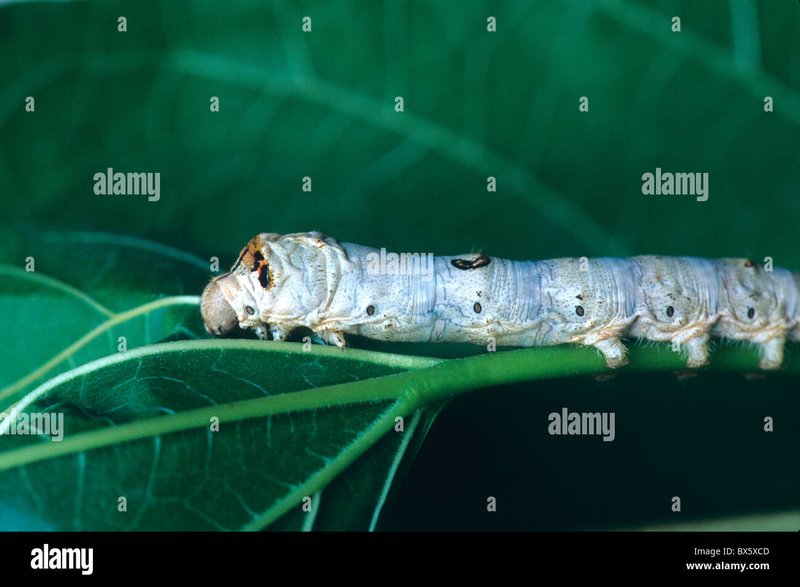
Silkworms, particularly the Bombyx mori species, are known for their role in silk production. But before they can spin those beautiful cocoons, they need a solid feeding plan. You might be wondering why a schedule is necessary—after all, don’t they just eat when they feel hungry? It’s a bit more complicated than that, but don’t worry, I’ll guide you through the essentials of feeding schedules that will help your silkworms thrive.
Understanding Silkworm Lifecycle
Before we dive into feeding schedules, let’s take a moment to understand the lifecycle of silkworms. These creatures go through four main stages: egg, larva, pupa, and adult. The larval stage, where they do most of their eating, can last about 4 to 6 weeks. During this time, they can grow remarkably fast, sometimes increasing in size by 10,000 times!
You might think of the larvae as teenagers—always hungry and growing quickly. In the larval stage, they continuously shed their skin, a process called molting. With each molt, they require even more food to fuel their growth, which makes having a proper feeding schedule vital.
Optimal Feeding Schedule
So, what does a good feeding schedule look like? Generally, silkworm larvae should be fed **several times a day**, especially during the first few weeks. Here’s a simple way to structure their meals:
- First Stage (Day 1-3): Feed them around 4-6 times a day!
- Second Stage (Day 4-9): Increase to 2-4 feedings daily to match their growth.
- Third Stage (Day 10-15): They’ll need more food—up to 3-4 times daily.
- Final Stage (Day 16-25): Maintain 2-3 feedings, focusing on high-quality mulberry leaves.
Sticking to this type of schedule will ensure that your silkworms get the best nutrition at crucial times. Providing food at regular intervals mimics their natural feeding habits and promotes optimal growth.
Choosing the Right Food
Now that we have a feeding schedule, what food should you provide? The best diet for silkworms is **fresh mulberry leaves**. They’re like a five-star buffet for these little larvae. If you can’t access fresh leaves, there are alternatives, such as mulberry leaf powder or specially formulated silkworm chow.
Here’s the thing: if you’re using fresh leaves, it’s essential to ensure they are clean and pesticide-free. Dirty leaves can be harmful, and no one wants sick silkworms. It might be beneficial to have a routine for sourcing, washing, and preparing the leaves to ensure they’re always fresh.
Avoiding Overfeeding
While it’s crucial to keep feeding your silkworms, overfeeding can lead to problems. If they eat too much, they might become sluggish or even unhealthy. Plus, uneaten food can rot and create unsanitary conditions in their habitat.
To avoid this, pay attention to the amount you provide. A good rule of thumb is to offer food that they can consume in a few hours. If you notice leftover leaves at the end of the day, it might be a sign to adjust the portion size in your next feeding.
Monitoring Growth and Adjusting the Schedule
Every batch of silkworms is unique. As you monitor their growth, you might need to adjust your feeding schedule slightly. If they seem particularly ravenous, consider increasing their food intake; if they’re not eating much, it could mean you’re overfeeding.
Track their progress through each molting stage, as this is when they have the most significant growth spurts. You can do this by measuring their size and weight, which can guide you on when to up the feeding times or adjust the quantity. Keeping a simple log can be incredibly helpful to keep track of their needs.
Common Problems and Solutions
Like any creature, silkworms can face challenges during their growth. Some common issues include:
- Too Little Food: If they’re not eating enough, they may not grow properly. You can increase the frequency of their feedings slightly.
- Overfeeding: If there’s leftover food, cut back on the portion sizes to avoid spoilage.
- Pest Problems: Occasionally, pests can invade their habitat. Ensure cleanliness and hygiene in their environment to prevent this.
If you encounter any of these problems, don’t panic. Adjusting your care routine usually solves them. Keeping a watchful eye on your silkworms will help you catch any issues early.
Feeding silkworm larvae might seem daunting at first, but with a solid schedule and the right food, you’ll be well on your way to raising healthy, thriving silkworms. Remember to adjust your feeding plan as they grow, monitor their progress, and stay consistent with high-quality mulberry leaves. These little creatures have remarkable potential, and with the right care, they’ll be ready to start their transformation into beautiful silk-producing moths. So grab those leaves and enjoy the fascinating journey of raising silkworms!

